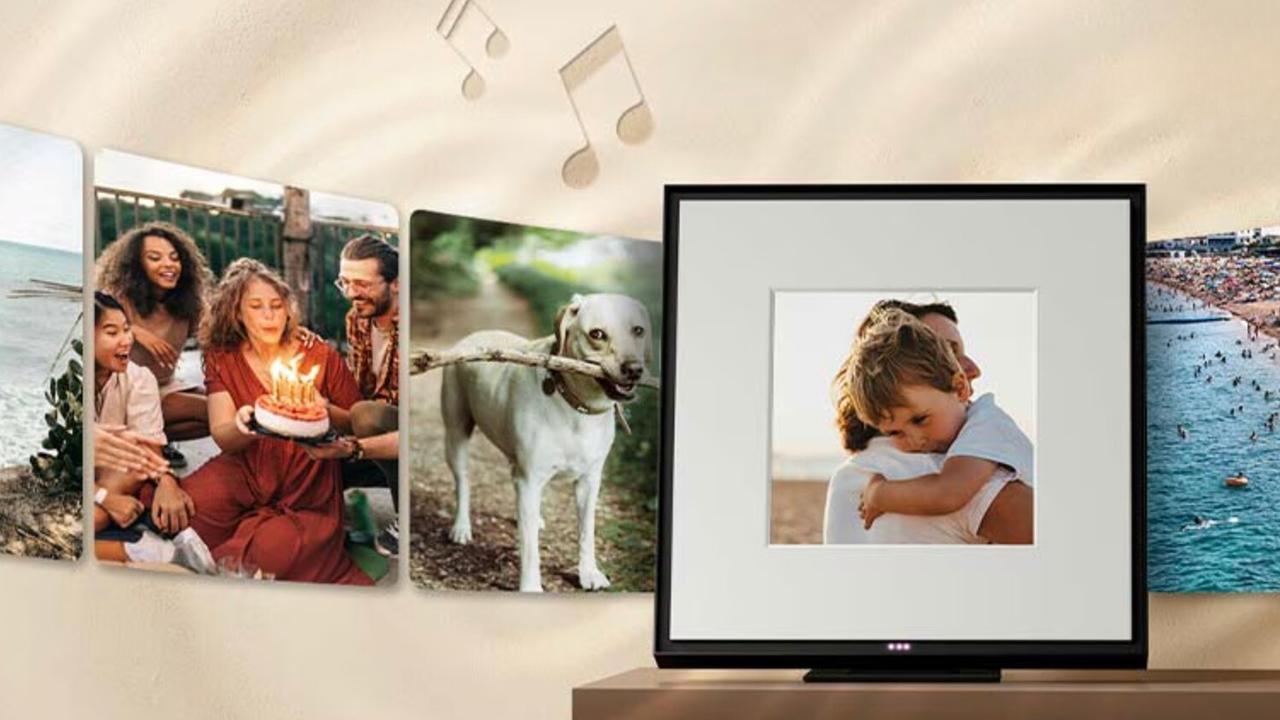Amazon Echo Studio, Google Home Max, Apple HomePod compete for smart speaker supremacy
Smart speakers are starting to sound better and better, so with a new range of sound-focused models, which should you take home?

Digital voice assistants that use AI to talk to us about news and weather and can be told to perform tasks like playing music and turning on lights are tipped to feature heavily under Christmas trees around the country this year.
More and more Australians are adopting smart speakers that use Amazon’s Alexa, Google’s Assistant, or Apple’s Siri assistant, despite concerns about privacy.
The speakers are fitted with microphones so that they can accept voice commands, which are supposed to listen only for their “wake word” to start listening, usually through commands like “Hey Alexa”, “OK Google” or “Hey Siri”.
All three companies and others have already been caught out recording things they weren’t meant to in this year alone.
Recordings that were listened to by contractors with the aim of improving the services captured people having private conversations and even intercourse.
As is often the case, consumers appear willing to look past this for the sake of utility, even at the expense of their privacy.
When the speakers were first introduced, the voice assistants that power them were the obvious main draw but the companies are now focusing on bigger and better sound. Here are some of the best sounding speakers that will respond to your voice.
AMAZON ECHO STUDIO – $329

The Amazon Echo Studio is the cheapest of the three, but that doesn’t mean it’s not good. The speaker is the biggest in the Echo range, with an understated cylindrical design similar to Apple’s Homepod speaker featured further down. Amazon’s vice president of Alexa and devices Miriam Daniel told news.com.au. last month that it was the best sounding speaker the company had made.
“You have to hear it to believe it, it’s a pretty powerful sounding speaker,” she said, adding that customers now expected better sound from the speakers.
This proved to be true after a test of the speaker revealed a wide soundstage that adapts to the room it’s in, providing impressive sound from a speaker this size at this price tag.
The other speakers on this list are also capable of automatically adjusting their sound to the environment, but the Studio is the only one that features Dolby’s Atmos 3D surround sound virtualisation.
The Echo Studio also features a hardwired switch to turn off the speaker’s listening capabilities, which Ms Daniel said is impossible for hackers to switch back on remotely. A red light illuminates to let you know when the microphone is off.
In a perhaps less intended security feature, raising the Echo Studio to its max volume can prevent the microphone being able to hear you, even when you want it to.
GOOGLE HOME MAX – $399

The Google Home Max is Google’s take on the big sounding smart speaker. Google has dominated the Australian smart speaker market, with recent Telsyte data putting its share at more than 70 per cent (Amazon trailed in second, with only 15 per cent).
A large proportion of these speakers are likely to be the company’s much cheaper Home Mini (now Nest Mini after Google rebranded the range to reflect the name of the smart home company it acquired in 2014 for $US3.2 billion ($A4.6 billion).
The smaller speaker usually costs $79, but the company is in the habit of offering steep discounts, sometimes even giving away the speakers for free to customers who didn’t even ask for one.
No such giveaways are offered on the Google Home Max however. For paying the extra price you get a better quality sound from a significantly louder speaker, with a modern design available in two colours to complement your home decor, and can be situated horizontally or vertically depending on the space available.
With the recent Nest rebranding, its possible there’s a new model on the way, so it might be worth holding off if you want to wait for that.
The sound quality can be a little muddy and can lean towards having too much bass, even when the Smart Sound feature adapts the sound to the room the speaker is in. Slightly excessive base aside, the Home Max offers a decent quality sound that’s backed by the intelligence of the Google Assistant.
If you have an Android smartphone this could be particularly attractive as you’ll also have Google Assistant on your phone, making it an easier transition so you don’t have to set up any other smart devices in your house with a new platform.
APPLE HOMEPOD – $449

The HomePod, like many Apple products, is best suited to consumers who have already committed to the company’s much vaunted “ecosystem” that ensures a consistent experience across a wide range of tech.
Apple’s Siri has been around longer than Alexa and Assistant, having first arrived on the App Store in 2010 before being included in the iPhone 4S in 2011. If you’ve used Siri on your phone before it’s a similar experience on the HomePod, and that’s not where the similarities end.
The HomePod is essentially an iPhone 6 built into a speaker, with Apple’s A8 processor that featured in that phone and other devices powering the HomePod, and a touch screen for gesture controls.
Unlike the speakers from Google and Amazon, Apple has opted for a metal grille construction rather than fabric, which is easier to clean if you want to have the speaker in somewhere like a kitchen where it could get dirty.
The HomePod is roughly the size of a pot plant, standing around 17 centimetres tall. Its compact size still provides impressive sound, thanks to the smarts of its processor, and makes it easy to find a spot for the speaker in most rooms.
SO WHICH IS RIGHT FOR YOU?
As you may have already detected, there isn’t a huge amount of difference between the smart speakers offered by Amazon, Google and Apple. The most noticeable differences are in the digital voice assistants that power them.
If you’re already using one of these on your smartphone, it makes sense to stick with the same on your home speaker.
Amazon is in the process of fitting Alexa into more and more devices, and recently announced it will run on devices with as little as one megabyte of RAM, providing potential for the smart assistant to be put in pretty much anything without blowing out the price with advanced technological requirements.
If this is something you think you might want in the future it could be wise to invest in an Alexa powered speaker now.
Alexa also has around 25,000 skills available to Australian users, which can expand the device function and allow it to do things like ask for the top recipe on a website like taste.com.au to be read to you, or if that’s too hard, order you a pizza from Domino’s just by asking.
Alexa is a bit more open than Assistant and Siri, and provides an easier way for third party developers to integrate with Alexa. If versatility is your main aim, then this could be the one for you.
Otherwise it comes down to a matter of which multi-billion dollar corporation you trust to put a microphone in your home.



